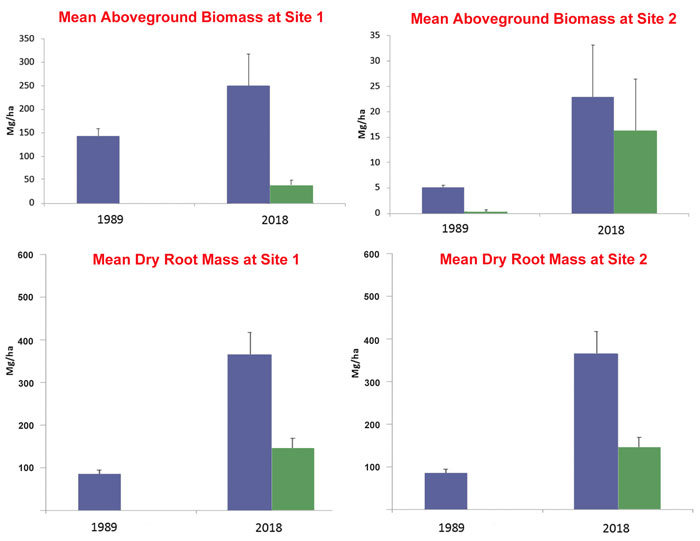| Tweet | Follow @co2science |
Paper Reviewed
Lamont, K., Saintilan, N., Kelleway, J.J., Mazumder, D. and Zawadzki, A. 2020. Thirty-year repeat measures of mangrove above- and below-ground biomass reveals unexpectedly high carbon sequestration. Ecosystems 23: 370-382.
Time and again climate alarmists have used computer models to claim that rising CO2 and rising temperatures should be negatively impacting various ecosystems, including forests. Given that these two parameters have supposedly reached unprecedented heights in modern history, reason suggests that this hypothesis of ecosystem decline should be presently evident in observational data. But is it?
Thanks to the work of Lamont et al. (2020) this question can be answered -- at least for a mangrove forest ecosystem in New South Wales, Australia.
What the five Australian researchers did in their study was to examine the biomass change of two mangrove forest sites over the period 1989-2018. The two sites included a tall gallery forest composed of Avicennia marina (i.e., Site 1) and an interior, higher elevation, stunted mixed community of A. marina and Aegiceras corniculatum (i.e., Site 2). Data originally gathered in a 1989 survey were compared with new data obtained by Lamont et al. in 2018 and thereafter analyzed for possible trends.
Results of the analysis are summarized in the figure below, showing large gains in both aboveground and below ground biomass between the two survey dates at both mangrove forest sites. Of particular note is "a greater than seven-fold increase in mean aboveground biomass" at Site 2, and "a six-fold and 12-fold increase [in total below-ground root mass] at Site 1 and Site 2, respectively." Such large biomass increases, not surprisingly, were estimated by the authors to have contributed to large gains in carbon sequestration. In extrapolating such gains to the entire New South Wales region, they estimate mangrove forests have sequestered "at least about 1.8 Tg C" over the past 70 years.
The above findings represent incredible growth benefits reaped by mangrove forest ecosystems during a time of rising atmospheric CO2 and rising temperature, which findings are pretty much the opposite of the doom and gloom predictions offered by climate alarmists.

Figure 1. Mean aboveground biomass (upper panels) and dry root mass (lower panels) of Avicennia marina (blue shading) and Aegiceras corniculatum (green shading) at a tall gallery forest (Site 1) and an interior, higher elevation, stunted mixed community forest (Site 2) in New South Wales, Australia, in 1989 and 2018. Error bars represent one standard error. Adapted from Lamont et al. (2020).




